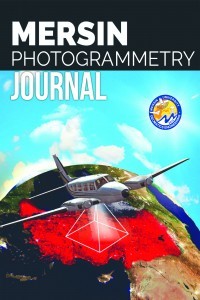EXCAVATION MONITORING WITH UAV IN ŞANLIURFA CASTLE ARCHAEOLOGICAL SITE
EXCAVATION MONITORING WITH UAV IN ŞANLIURFA CASTLE ARCHAEOLOGICAL SITE
UAV Photogrammetry, Archaeology, Documentation, Sanlıurfa,
___
- Böhler, W. G. Heinz, 1999. Documentation, surveying, photogrammetry, XVII CIPA Symposium. Recife, Olinda.
- Colomina, I.; M. Blázquez, P. Molina, M.E. Parés, M. Wis, 2008. Towards a new paradigm for high-resolution low-cost photogrammetry and remote sensing, IAPRS&SIS, pp. 1201–1206.
- Eisenbeiss, H. 2009. UAV Photogrammetry, Diss. ETH No. 18515, Institute of Geodesy and Photogrammetry, ETH Zurich, pp. 235.
- Georgopoulos A., Ioannidis G., 2004, Photogrammetric and urveying methods for the geometric recording of archaeological monuments, Archaeological Surveys, FIG Working Week 2004 Athens, Greece, May 22– 27, 2004
- Kulur S, Yilmazturk, F., 2005. 3Dreconstruction of small historical objects to exhibit in virtual museum by means of digital photogrammetry, CIPA 2005 XX. International Symposium, International Cooperation to Save the World`s Cultural Heritage, 26 Sep.–01 Oct. 2005, Torino, Italy.
- Micheletti, N.; J.H. Chandler, S.N. Lane, 2015. Structure from Motion (SfM) Photogrammetry, Geomorphol. Tech. 2
- Remondino, F;. L. Barazzetti, F. Nex, M. Scaioni, D. Sarazzi, 2011. UAV Photogrammetry for mapping and 3D modeling current status and future perspectives, ISPRS ICWG I/V UAV-g Conference, Zurich, Switzerland,
- Scherer M., 2002. About the synthesis of different methods in surveying, XVIII International Symposium of CIPA, Potsdam, Germany.
- Snavely, N.K. 2009. Scene reconstruction and visualization from internet photo collections, University of Washington,
- Tanskanen, P.; K. Kolev, L. Meier, F. Camposeco, O. Saurer, M. Pollefeys, Live Metric 3D reconstruction on mobile phones, in: 2013 IEEE Int. Conf. Comput. Vis., IEEE, 2013: pp. 65–72.
- Westoby, M.J.; J. Brasington, N.F. Glasser, M.J. Hambrey, J.M. Reynolds, 2012. “Structure-from-Motion” photogrammetry: A low-cost, effective tool for geoscience applications, Geomorphology. 179 300–314.
- Yakar, M., Yıldız F., Özkütük, A., Neşeli, O., Kurhan, E., Durdu, O., 2011. Sultanhanı Kervansarayı Fotogrametrik Rölöve Alımı ve 3 Boyutlu Modelleme Çalışması, Tmmob Harita Kadastro Mühendisleri Odası, 13. Türkiye Harita Bilimsel ve Teknik Kurultayı, (in Turkish).
- Yayın Aralığı: Yılda 2 Sayı
- Başlangıç: 2019
- Yayıncı: Mersin Üniversitesi
MAPPING OF A ROCKFALL SITE WITH AN UNMANNED AERIAL VEHICLE
Aydın ALPTEKİN, Mehmet Özgür ÇELİK, Yusuf DOĞAN, Murat YAKAR
EXCAVATION MONITORING WITH UAV IN ŞANLIURFA CASTLE ARCHAEOLOGICAL SITE
Mustafa ULUKAVAK, Abdulkadir MEMDUHOĞLU, Halil İbrahim ŞENOL, Nizar POLAT
THE USE OF UAV AND PHOTOGRAMMETRY IN DIGITAL DOCUMENTATION
Mustafa ULUKAVAK, Abdulkadir MEMDUHOĞLU, Halil İbrahim ŞENOL, Nizar POLAT
MODELING OF HISTORICAL FOUNTAINS BY USING CLOSE-RANGE PHOTOGRAMMETRIC TECHNIQUES
Ali ULVİ, Abdurrahman Yasin YİĞİT, Murat YAKAR
